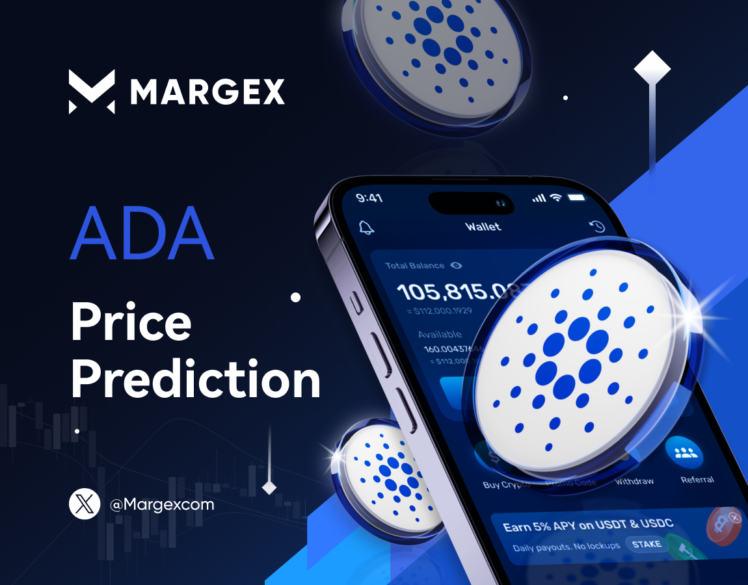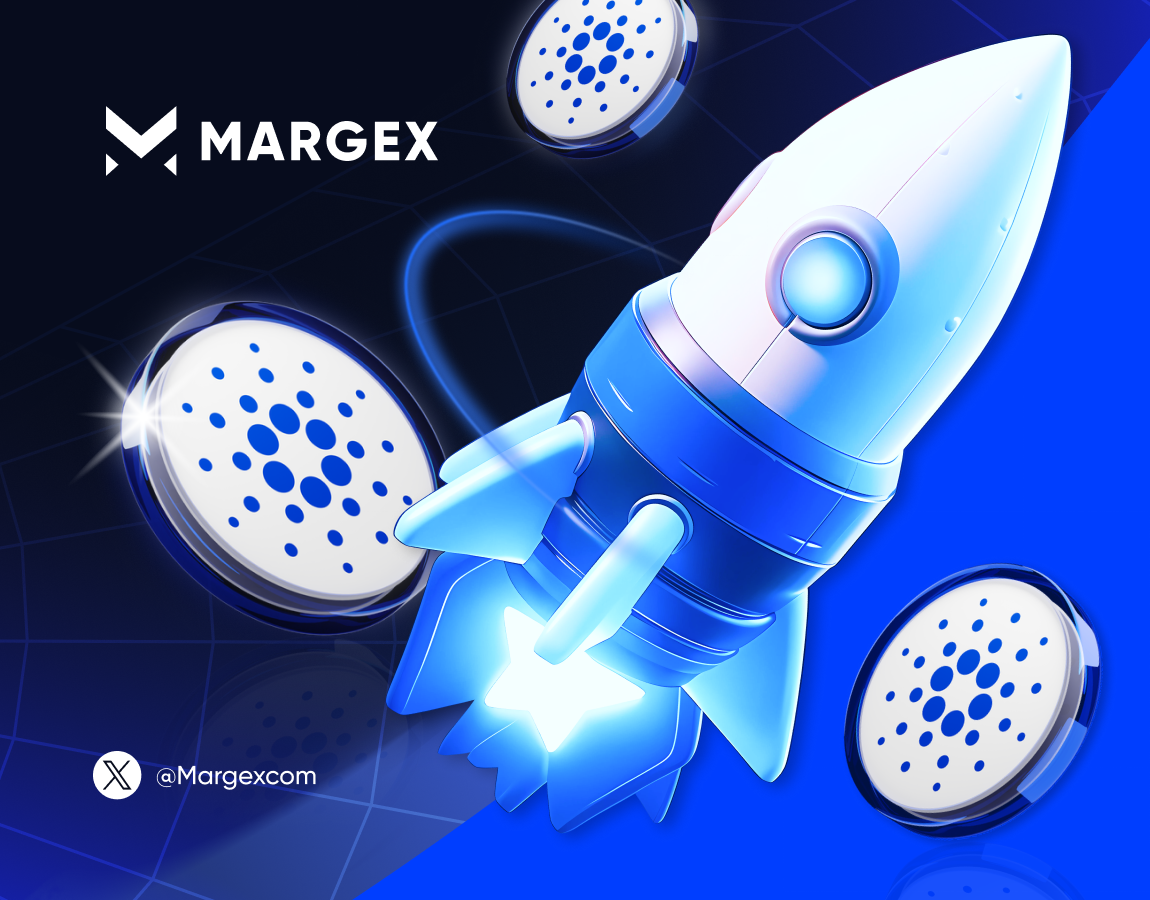Margex Market Analysis: Cardano (ADA) Price Prediction 2025-2026

Cardano is a leading blockchain project that has been operational since 2017, and its native token, ADA, consistently ranks among the top cryptocurrencies by market capitalization. Unlike first-generation blockchain platforms, Cardano was designed from the outset to utilize a Proof-of-Stake consensus mechanism, specifically the Ouroboros protocol, to enhance energy efficiency and scalability.
As of March 2025, ADA is a widely adopted cryptocurrency with diverse utilities, positioning Cardano as a strong competitor to platforms like Ethereum.
The brief history of Cardano
Cardano was founded by mathematician Charles Hoskinson and Jeremy Wood in 2015. The development of Cardano is spearheaded by IOHK (Input Output Hong Kong), now known as IOG (Input Output Global), the company co-founded by Hoskinson and Wood. But before IOHK and Cardano were created, Hoskinson was also well-known as one of the founders of Ethereum – the second largest blockchain platform, a launchpad for dapps, NFTs, DeFi, and other blockchains.
When Hoskinson’s vision of Ethereum’s future did not coincide with that of Vitalik Buterin and the other Ethereum co-founders, Hoskinson left and set to create his own distributed ledger platform where he would be the only boss and his own master.
Cardano’s mainnet was launched in September 2017, following its initial development phase that began in 2015. Hoskinson’s goal was to build a secure, scalable and a more sustainable blockchain than those which had been in the market by that time already – Bitcoin, Ethereum, Litecoin, XRP. Taking into account the Bitcoin block size issue, he wanted to overcome those limitations of the very first cryptocurrency by making his platform a lot more robust and scalable. Hoskinson also wanted to overcome the scalability issues of Ethereum and turn his brainchild into a powerful rival to allow developers to build their decentralized applications (dapps) and smart contracts.
Main features of Cardano blockchain
The two main layers of Cardano consist of the Settlement Layer and the Computation Layer. The former is in charge of ADA transactions, making them in a fast and secure manner. The latter layer provides support for smart contracts and dapps, giving developers a flexible environment to work in.
The Proof-of-Stake consensus algorithm used by Cardano is known as Ourboros. It was designed by the Cardano team to outperform the Proof-of-Work algorithms which was used by Bitcoin and back then by Ethereum too (in 2023, Ethereum also transitioned to a Proof-of-Stake basis).
Ourboros operates in such a manner that it divides time into “epochs” or “eras” for Cardano and each of those epochs are split into slots, which ensures better scalability and throughput for this blockchain. Each of the eras are named after the major Cardano features that were introduced during it. Thus, there has already been the Byron Era (2017-2020), the initial phase of Cardano and the launch of ADA, along with Cardano’s native wallet Daedalus. The Cardano Mainnet was launched during that era – in 2017.
The next one came during the Shelley Era (2020-2021). During this period the Cardano team pulled its focus on further Cardano development – in particular, the focus was on decentralization and the security of the whole network.
| Day | Minimum Price | Average Price | Maximum Price |
|---|
Then came Shelley Mainnet Launch in July 2020. It laid the basis for the introduction of ADA staking which was launched in August of the same year. Users were able to lock their ADA coins in their wallets. They were able to become part of Cardano’s proof-of-stake mechanism and to earn rewards for helping to secure the network in this way.
During the next significant period of Cardano’s history – the Goguen Era which lasted from 2021 to 2022, the team and the community were busy enabling smart contracts and dapps, introducing DeFi on Cardano. In September 2021, thanks to the Alonzo Upgrade, developers were able to start building their own decentralized apps on Cardano.
This was the point when Cardano became a fully-fledged rival of Ethereum as the former finally entered the smart contract space. As of March 2025, Cardano has progressed through the Basho Era and is now in the Voltaire Era, focusing on governance and self-sustainability.
| Month | Minimum Price | Average Price | Maximum Price |
|---|
All these epochs have added something to Cardano and ADA and have brought this cryptocurrency and the blockchain platform to the height on which it dwells now, expanding around the world and attracting new investors and long-term holders.
Cardano (ADA) price prediction
As of March 2025, ADA holds a top 10 position on CoinMarketCap with a market capitalization of approximately $21.88 billion.
It is trading at approximately $0.621. By the end of this year, various experts and analysts expect ADA to come really close to the $0.5 level and perhaps slightly overcome it.
By the end of 2025, Cardano’s native cryptocurrency is likely to reach at least $0.699 per coin. As for 2026, analysts believe this coin has a potential to spike much higher and begin trading at $0.786 in March, reaching $1.05 by December.
This content is not intended for U.S. or Canadian residents. We disclaim any liability for losses incurred based on the information provided.




